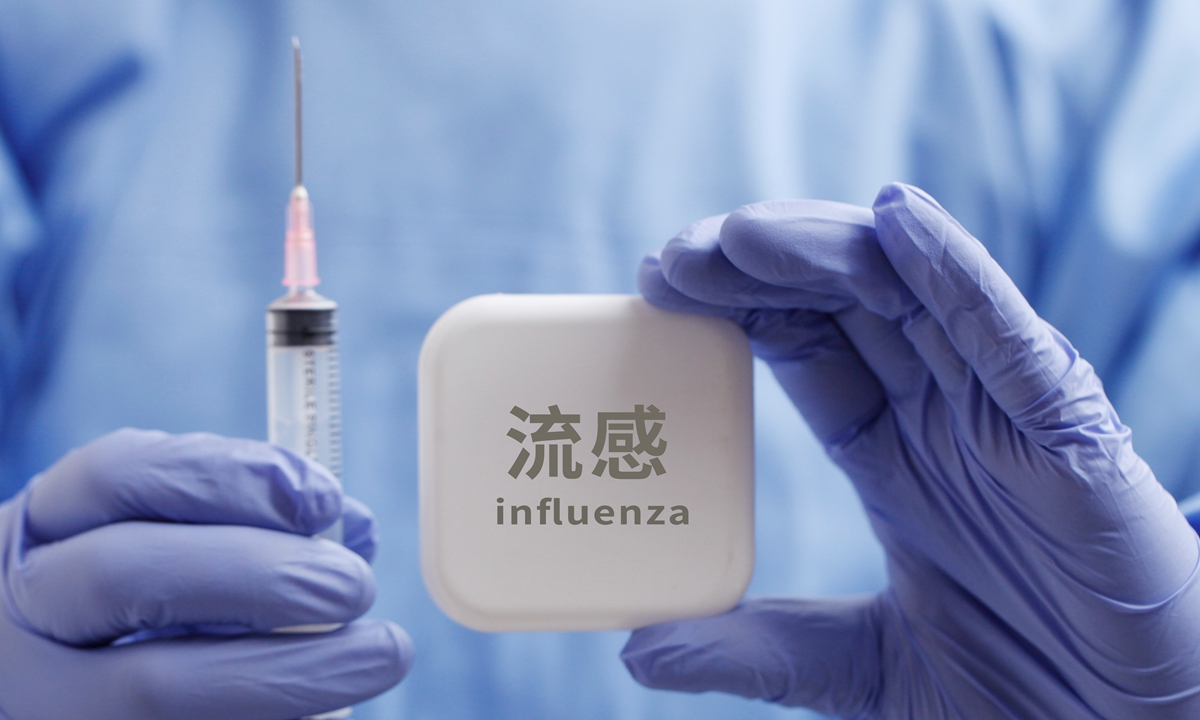
Influenza Photo: CPF
The positive rate of the influenza viruses dominated by the influenza A (H3N2) subtype in southern China has continued to rise, with some regions seeing a spike in cases surpassing that of winter, according to data released by the Chinese National Influenza Center (CNIC).
Medical experts attributed the outbreak to multiple factors but highlighted that weak immunity against influenza may rise due to low exposure to respiratory pathogens affected by prevention and control measures against COVID-19.
Since May 9, positive influenza infections in provincial regions in southern China have increased, rising from 2.8 percent in early May to 30.1 percent in mid-June, according to a latest weekly report by the CNIC.
Among the 507 influenza outbreaks (above 10 cases) in 17 provinces between April 4 and June 19, 503 were in southern China, a sharp increase from the 136 in 2021 in the same period, the report noted.
South China's Guangdong Province (119), East China's Fujian Province (109) and South China's Guangxi Zhuang Autonomous Region (79) were the top three regions with the most influenza outbreaks, the weekly report showed.
Frequent rainfalls and low temperatures this summer may have contributed to the abnormal influenza prevalence in southern China, while prevention and control measures against COVID-19 have reduced the public's exposure to respiratory pathogens, resulting in weakened herd immunity against influenza, Lu Hongzhou, head of the Third People's Hospital of Shenzhen, told the Global Times on Tuesday.
With the COVID-19 control measures being lifted overseas, it is also creating fertile ground for the resurgence of all kinds of diseases, Lu noted.
Media reports showed the occurrence of respiratory virus outbreaks in non-prevalent seasons is a phenomenon not only in China, but also in many other places, including the UK and the US.
Lu said that Guangdong Province had registered more than 126,850 cases in the first six months of 2022, 10.38 times higher than in the first half of 2021. Of those cases, there was one death. The positive infection rate in the second week of June was as high as 43.12 percent.
The H3N2 subtype is characterized by high epidemic intensity, high infection rate and rapid mutation frequency. The overall fatality rate of infection is about 0.2 percent, Lu said.
In response, disease prevention and control departments in many provinces have issued alerts over the high prevalence of influenza and hospitals adjusted measures to avoid crowded line-up and concentrated presence in public places.
Guangdong Provincial Health Commission has greenlighted children less than 14 years old who have a fever to leave hospitals before they get a nucleic acid testing result. Normally anyone who visits a fever clinic must receive a negative testing report before being allowed to depart.
Xiamen health commission in Fujian Province suggested pediatricians should not get involved with COVID-19 related work so as to better deal with the influenza high season among children. The number of visitors to local fever clinics rose from 15,000 to 33,000 since June, according to Fujian provincial health commission.
Driven by huge demand, influenza antiviral drugs such as oseltamivir are in short supply in many pharmacies of southern China, according to media reports.
Experts believed the chance for a nationwide influenza outbreak is low but warned of the dual risks caused by COVID-19 and influenza. They said it is not yet time to take off masks and give up social distancing.
As the COVID-19 epidemic is not over, the most effective solution to cope with influenza prevalence is vaccination, Lu noted.
The influenza vaccinate rate in China is low over the years with the average nationwide rate at around 5 percent. The rate among pre-school children is around 12 percent. The number in some Western countries could be as high as 70 percent, the expert said.




